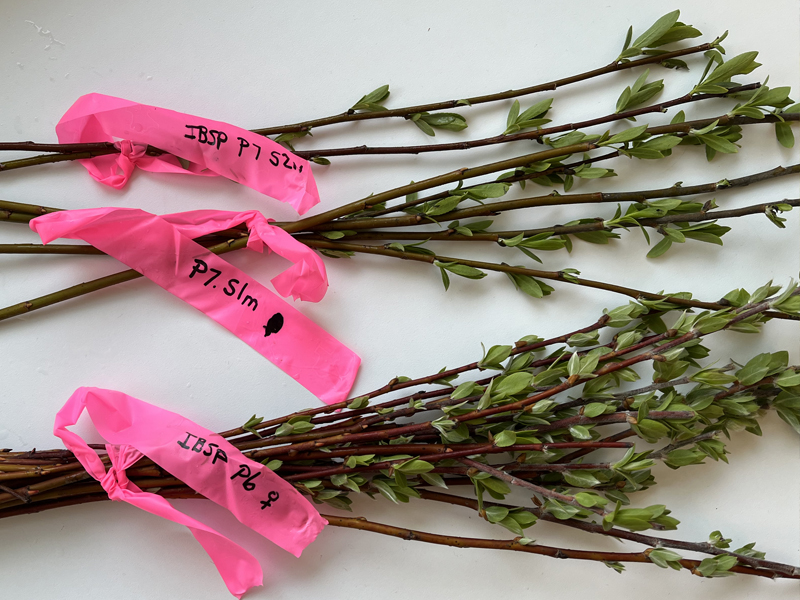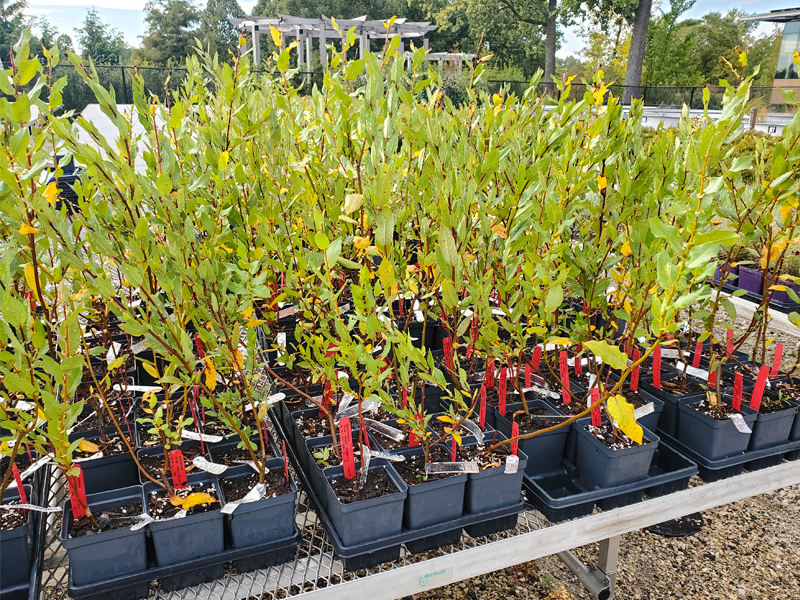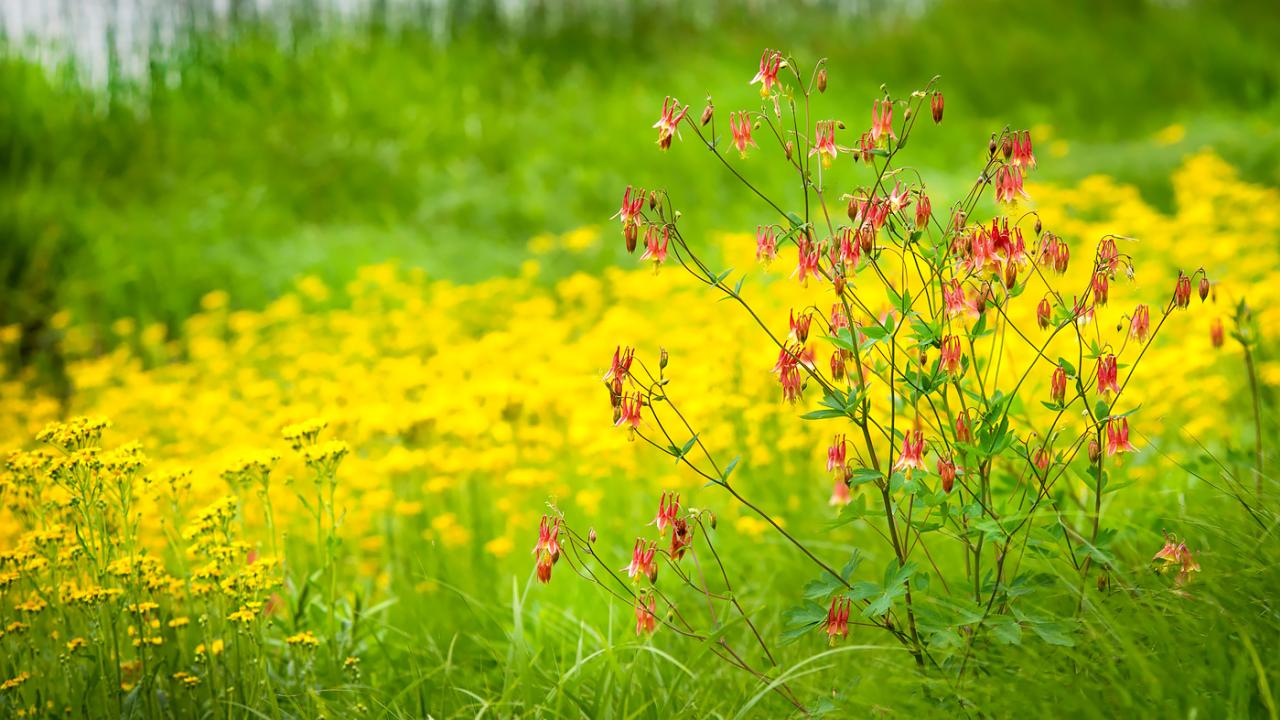

Plant Science &
Conservation
Garden Stories
Endangered Plant Rescue
The Dune Willow
Wading through frigid flood waters with a GPS unit, David Johannesen searched for the 12 remaining dune willows (Salix syrticola) at Illinois Beach State Park in Zion, IL.
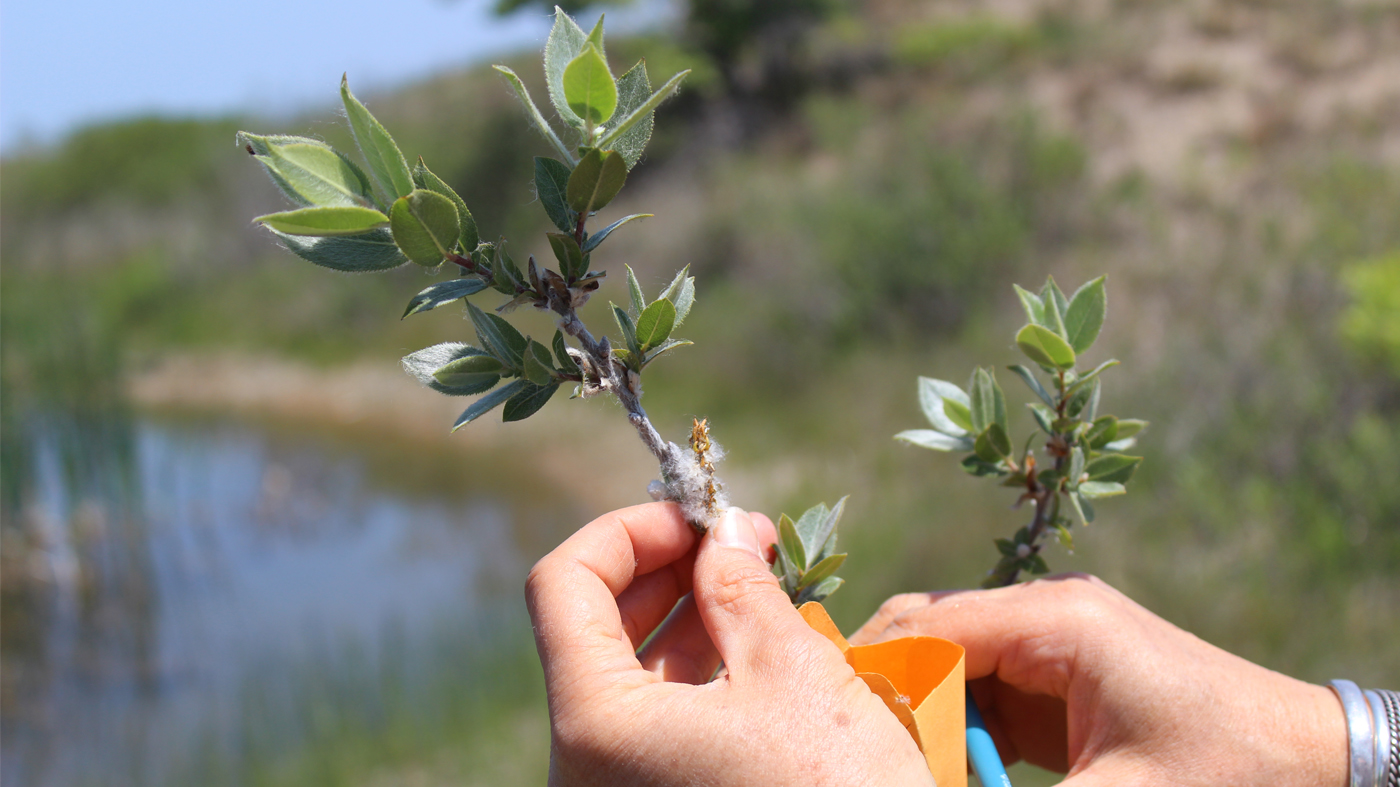
Collecting seed from a dune willow. Photo by Grant Fessler.
A January 2020 storm had battered the park’s dunes and pushed Lake Michigan inland, flooding vast areas of the park. Now Johannesen, a volunteer for the Chicago Botanic Garden’s Plants of Concern rare plant monitoring program, aimed his camera at the fallout—dune willows almost fully submerged, others tethered to sand by just a few roots.
“A lot of rare plant monitoring is just monitoring, and sometimes volunteers see things declining,” said Gretel Kiefer, manager of Plants of Concern. “In this case, there was such an alarm, erosion and flooding physically scouring the plants themselves. The monitors sent me pictures of dune willows underwater and said, ‘What can we do? We have to do something.’”
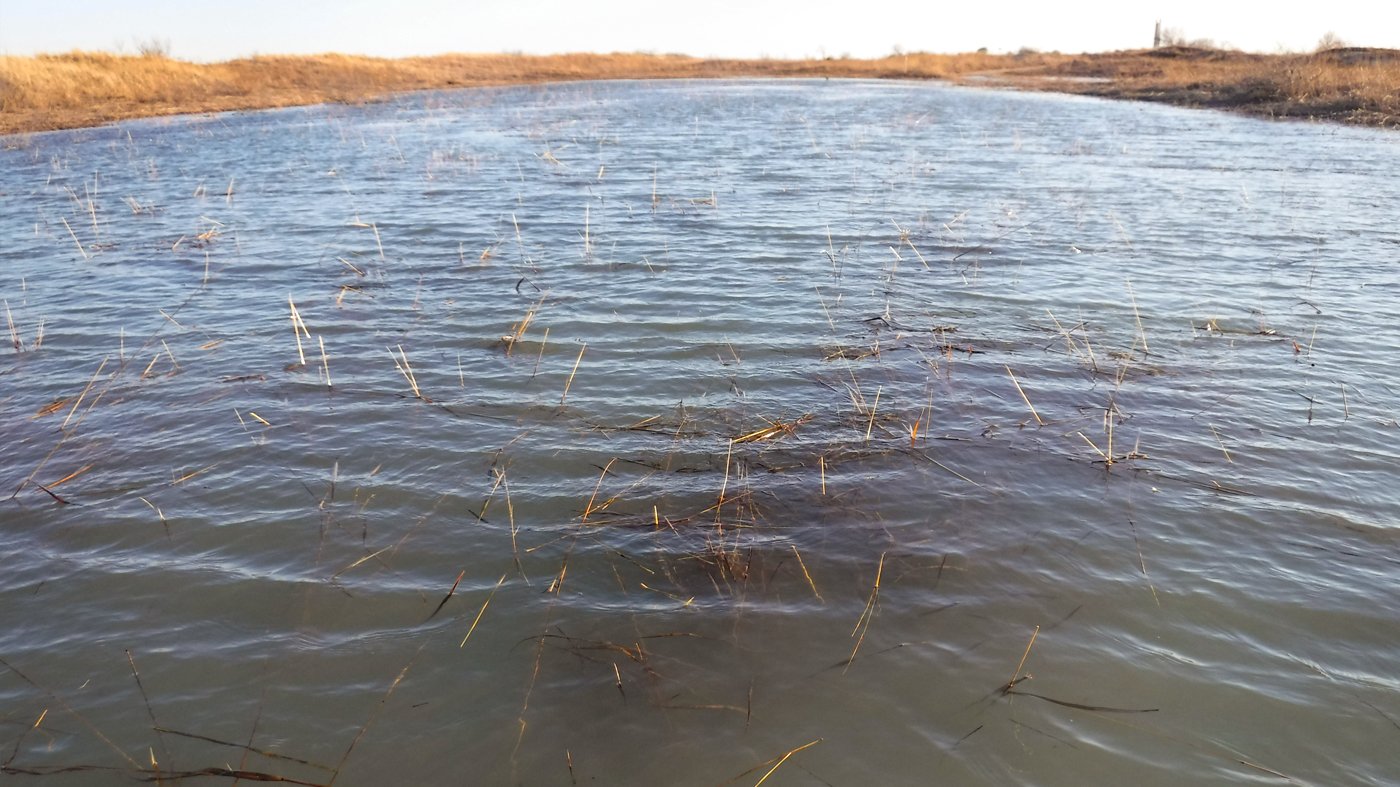
Dune willow at Illinois Beach State Park submerged after a late winter storm. Photo by David Johannesen.
No replacement
Because so little of Lake Michigan’s shoreline remains undisturbed, dune willow survives at just a few sites in Illinois and is listed as endangered in the state.
Dune willow’s spring blooms provide meals for early emerging pollinators and its leaves feed the caterpillars of many butterflies and moths. When healthy, the plants play an important role in Illinois Beach’s dune and swale landscape—dry sandy ridges alternating with wet depressions—which features a mosaic of uncommon prairies, savannas, and globally rare wetlands.
“There is no ‘replacement’ site for Illinois Beach, nor is there a possibility to re-create such a unique ecosystem at such a large scale,” according to the Illinois Nature Preserves Commission.
Illinois Beach supports more than 500 plant and 300 animal species, and each time a species disappears it leaves a hole that tears at the fabric of the entire site, making it more vulnerable to impacts from human development and climate change.
Plants of Concern would not just watch as dune willow disappeared.
Left: Cuttings taken from surviving dune willows at Illinois Beach State Park. Right: Dune willows grown from the cuttings at the Garden. Photos by Gretel Kiefer.
Survival through creative cloning
Working with a sense of urgency, a team from Plants of Concern and the Illinois Department of Natural Resources, took cuttings from the surviving dune willows that spring. By June, they had nearly 60 new plants—grown by the Garden’s plant production staff—ready to go back to Illinois Beach.
But plants grown from cuttings are clones, genetically identical to the plant they are cut from. To build a more resilient, genetically diverse population, they would need the dune willows to produce seed. With 12 surviving dune willows and individual plants having only male or female flowers, the team needed to get creative to help them reproduce.
Planting around the surviving dune willows, they established groups of genetically mixed male and female plants—some in wetter areas, some in drier, hoping to ensure a portion survived the unforgiving conditions along the lakefront. And, as Plants of Concern does, they collected a lot of data.
“We are tracking the origin and location of all individual plants,” said Kiefer. “We know the sex of every dune willow at Illinois Beach and check the females for seed in spring.”
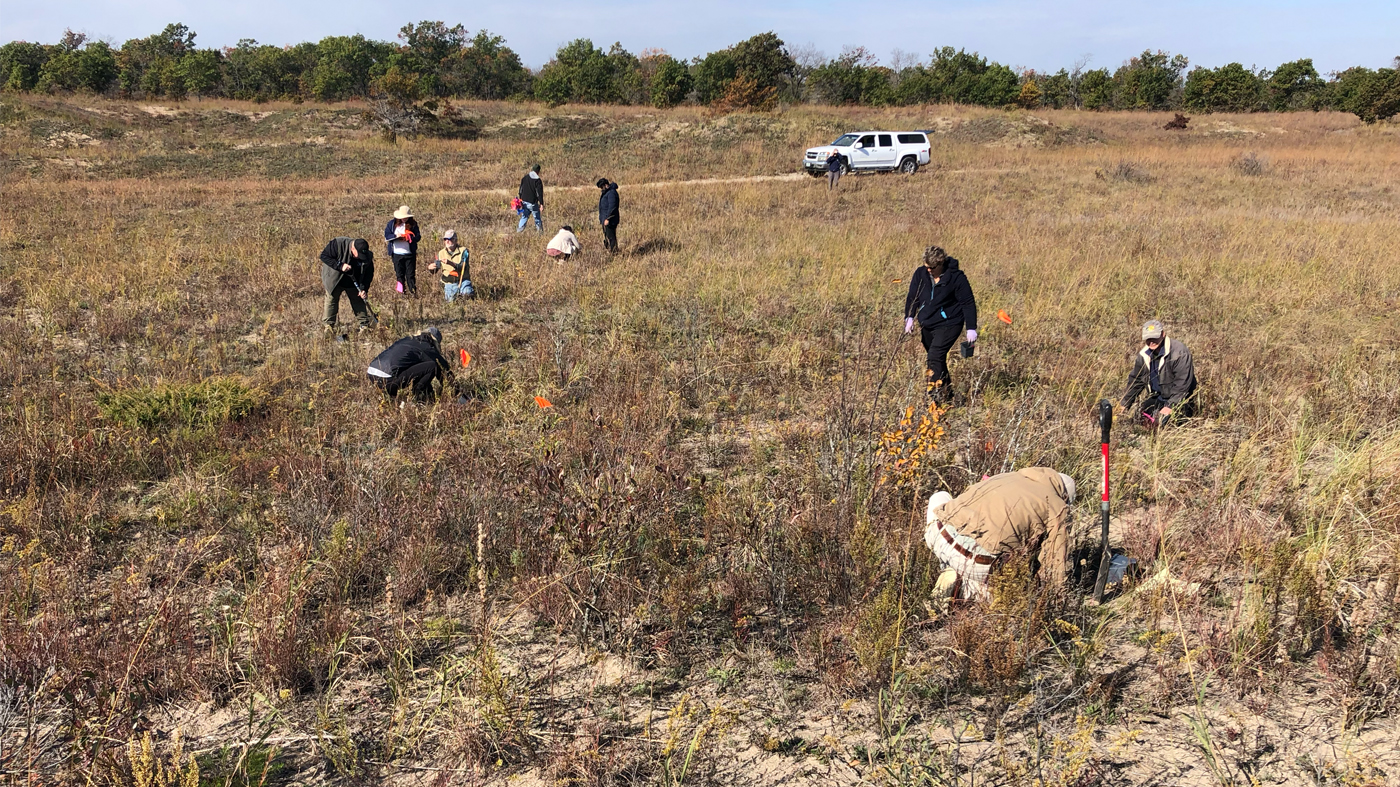
Volunteers planting dune willows at Illinois Beach State Park.
Monitoring rare species for the greater good
Walking over undulating dunes with a GPS unit, Plants of Concern staff and volunteers found seed on a female dune willow for the first time in June 2023—a little more than three years after they planted the first dune willow cuttings.
In October, Plants of Concern staff planted the first dune willows grown from seed, a major step toward securing a future for the species at Illinois Beach.
“People get excited about rare plants like the dune willow, but really, it’s the habitat we’re conserving,” said Kiefer. “Plants of Concern focuses on rare species for the greater good of habitats that support more than just rare plants.”
Excited about rare plants? Learn more about volunteering with Plants of Concern


